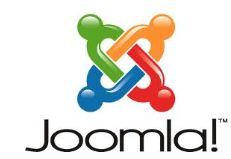Many companies approach us and ask, “I want to maintain and update my own website. What CMS platform do you suggest?” When reviewing content management systems (CMS) with clients, we go over the pros and cons of the most popular systems, and evaluate their background and website capabilities to ensure that the correct CMS platform is selected for your company. Sometimes a CMS platform is not the solution for a company, and an affordable monthly maintenance program is more appropriate.
Following, we discuss the pros and cons of three major CMS platforms: Drupal, Joomla, and WordPress.
Drupal
 If you are the type of person who would rather hand-code the content of your pages than use a WYSIWYG editor (What You See Is What You Get, similar to document editing software), or if you enjoy tweaking the code that makes up the framework of a website, then Drupal is probably for you. This advanced CMS closely resembles a developer platform, rather than a traditional CMS.
If you are the type of person who would rather hand-code the content of your pages than use a WYSIWYG editor (What You See Is What You Get, similar to document editing software), or if you enjoy tweaking the code that makes up the framework of a website, then Drupal is probably for you. This advanced CMS closely resembles a developer platform, rather than a traditional CMS.
While this system can be used by non-developers, developers will likely feel more at home here than in the other two. However, being more developer-friendly does not automatically make it more user-friendly.
There are dozens of additional functions that can be used to develop in Drupal in comparison to WordPress or Joomla. Every published piece of content (called a ‘node’ in Drupal) has its own set of commands and tags. These commands and tags can be accessed elsewhere (allowing similar functionality to be repurposed without having to be reprogrammed), which makes for a very intense experience (whether or not you know what you’re doing). For those that are not very technical, this can be the trial of their lives. For people who live in code, they can literally get lost developing some very cool websites.
While Drupal websites can act and function in some pretty neat ways, they are sometimes limited by not always looking that great. Just about any look and feel can be built into Drupal, but the nature of the tool puts emphasis on the back end functionality of the website. We have seen few websites built in Drupal that look and feel as good as they function. You can see this in the theme directory on the Drupal.org website, in comparison to other CMS websites such as WordPress. It is a shame, because with all of the development advancements of the software, it would almost be perfect with a stronger design interface and improved usability.
Drupal Pros
- Extremely developer friendly: great if you love coding
- Strong community to help discern the dozens (hundreds) of available functions and tags
- Can be used to create some awesome websites that can outperform the majority of sites around the Internet
Drupal Cons
- Not as designer-friendly or user-friendly, and hard for someone with little code experience to make the leaps required to do the very cool things for which Drupal is known
- Theming of Drupal has been a big limitation (until recently), perhaps because it has been developers (not designers) that are making the themes
- Getting a Drupal website published could cost you more time, and thus more money, than WordPress or Joomla
Joomla
 Joomla blends some of the ease of use for beginners with some advanced coding capabilities. Designers will often choose Joomla because of the amazing capabilities that its engine has in making websites look fantastic. Newcomers to Joomla (and website management) will love the fact that it is very easy to use, and is customizable as more developers create tools that are easier to understand. Developers might choose the system because of its capacity for development and customization.
Joomla blends some of the ease of use for beginners with some advanced coding capabilities. Designers will often choose Joomla because of the amazing capabilities that its engine has in making websites look fantastic. Newcomers to Joomla (and website management) will love the fact that it is very easy to use, and is customizable as more developers create tools that are easier to understand. Developers might choose the system because of its capacity for development and customization.
Still, Joomla is not as flexible as Drupal with its coding capabilities. While there are many ways to override default coding functionality, there are parts of the system that cannot be pushed and stressed as hard as Drupal. Also, while Drupal can be used to run multiple websites with one backend and database, Joomla lacks the ability to create multi-sites.
Compared to WordPress, Joomla has a ways to go in being as user-friendly. In cases where people use both systems to manage a website, those that lacked coding experience and a detailed understanding of the back-end of their website chose WordPress over Joomla. Joomla is simple enough that most can learn to use it, but not simple enough that everyone would pick it up easily.
Joomla Pros
- Friendly for most types of users, including designers, developers and administrators
- Huge community is awesome for assisting with website development
- Has been rapidly growing and improving itself for the past several years
Joomla Cons
- Still not quite user-friendly enough for everyone to understand
- Not quite as powerful as Drupal, and can be a bit confusing for some to learn
- Recently rebuilt the entire system from ground-up, and so many still using old versions (1.0.x); new version has some bugs
WordPress
 WordPress is an excellent open-source system to use when creating a website that lets you quickly get your thoughts published on the web. While WordPress is often used as a blog platform, it can serve as a website CMS that can incorporate huge libraries of ‘plugins’ (such as social media integration or search engine optimization) to add powerful functionality to a website.
WordPress is an excellent open-source system to use when creating a website that lets you quickly get your thoughts published on the web. While WordPress is often used as a blog platform, it can serve as a website CMS that can incorporate huge libraries of ‘plugins’ (such as social media integration or search engine optimization) to add powerful functionality to a website.
WordPress is extremely easy to use and setup. We have used it with clients that are new to the Internet, and they can pick this system up and use it quicker than any other system out there. Since WordPress is already developed to work as a blog, it can be setup to be a website very easily. WordPress also has an excellent WYSIWYG editor (with basic document editing controls), so content authoring is very easily done within WordPress. A commenting system is built in, as well as pinging services, multiple author profiles (for assigning content editing rights), as well as trackbacks and more. In most cases little needs to be done to set up the system, because it is initially set up to work the way most users want right out of the box.
WordPress allows for graphic designers to develop custom graphics for the website and to easily integrate them as a custom theme for WordPress. In other words, your website on WordPress can have any look and feel that you want. For example, Helen Sharritt Interiors (www.helensharrittinteriors.com) is a WordPress website with custom graphics developed by CueCamp, and you will not find this theme anywhere else on WordPress. Our graphic designers created the custom design, graphics and layout.
WordPress Pros
- Simple to use, no need for modifications
- Excellent for blogging or sharing thoughts sequentially
- Non-technical users can get the hang of it quickly
- Many free plugins for event calendars, social media, and other marketing tools
- Affordable solution to maintain your own website
WordPress Cons
- Not as developer friendly as other CMS like Drupal
Which Will You Choose?
Now it is time to make a decision. Joomla and WordPress are both known for their user-friendly interface, while Drupal may take some time to master but provide advanced functionality for advanced programmers. We recommend that you weigh the pros and cons of each popular CMS platform listed above, and discuss these options with those that will be maintaining your website in the years to come.
If you have questions about content management, or any systems you are considering for your website, please do not hesitate to contact CueCamp. You can call us at (630) 333-9909 or email info@cuecamp.com for more information. We would love to help you make this important decision, and help ensure your business achieves success with its Internet marketing objectives.
Written by: Michel Ann Sharritt
Posted by: CueCamp



Brian Hewitt
Hello,
Thanks for the article… which states “Joomla lacks the ability to create multi-sites.” Question: Can you create multiple sites with WordPress?
Thanks,
Brian
Michel Ann Sharritt
The answer is yes, you can. The great thing about WordPress is that they have a plugin for everything you want to do.
For more information please visit:
http://wordpress.org/extend/plugins/multisite-switcher/
Please contact us if you have any other questions.
Marcus Aurelias
Hi,
You appear to have not looked at SaaS based solutions such as Limelight’s Dynamic Site Platform which includes video integration, front end optimisation and content delivery in an integrated solution.
Will you be covering this part of the market in another feature?
Marcus
Michel Ann Sharritt
Marcus thank you for your question.
As you probably already know there are many systems out there that we could have talked about. However, these are the three major ones that come up for our clients all of the time. That is why we featured these in this article.
You can click on the link below for a list of CMS that are out there for more information.
http://en.wikipedia.org/wiki/List_of_content_management_systems
Thank you again for your question.
Andrew Mooers
Thanks for the run down. The appeal of Drupal to manage multiple sites from the back end is huge. Because the audience is not just vanilla and chocolate any more. More sites to juggle with slightly different slant to hit the niche, segment audience.
Jill Hoffman
Is it true that WordPress is not as secure as other CMS such as Joomla and Drupal?
Michel Ann Sharritt
All three systems are pretty secure.
WordPress has had its security issues before, especially for the hosted one (WordPress.com), but as of right now, the security issues are very ironed out in WordPress and if there are any security issues, it’s typically caused by WordPress’s third party plugins.
When working with Joomla we have found out that Joomla has a lot of bug issues resulting in security problems from time to time. And Drupal is the most secure however your team needs to know some programming in order to use Drupal.
As a general rule if you are running a very simple website, no databases, then use WordPress. Make sure your server is secure and check with your hosting company that you are on your own designated server and not a shared server.
Thanks for the question Jill.
Kyoko Champman
Very good blog buddy.. Thank you very much for your time in writing this stuff. I will put this on my Facebook page for my friends to come and read it as well.